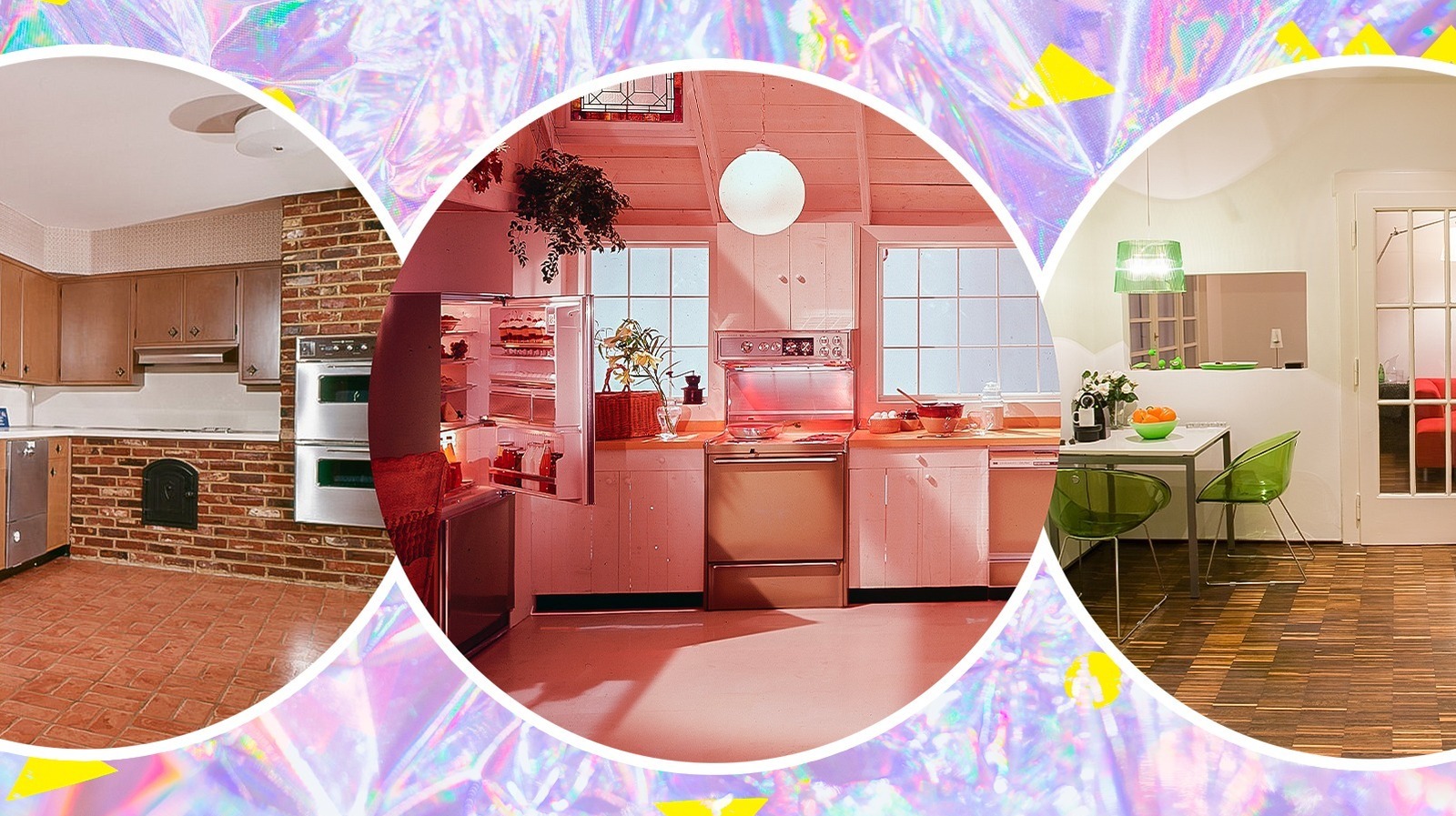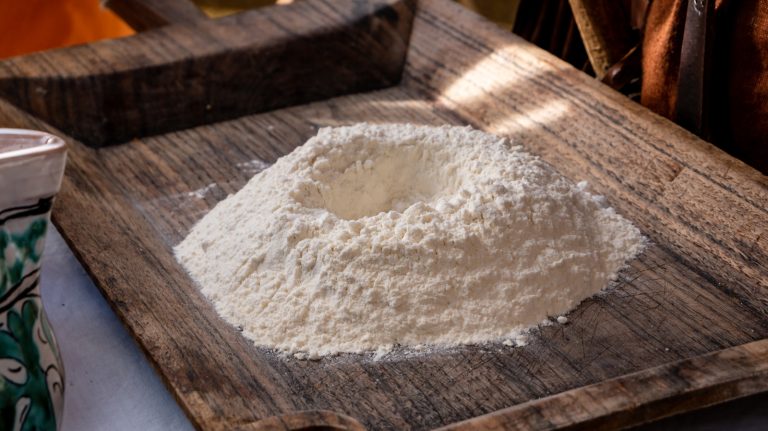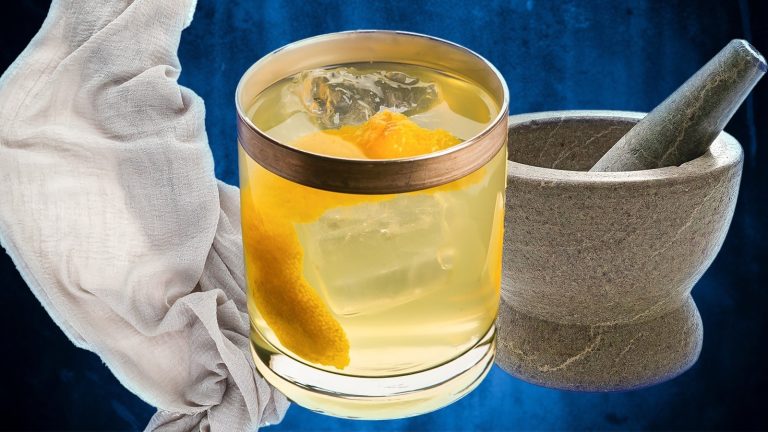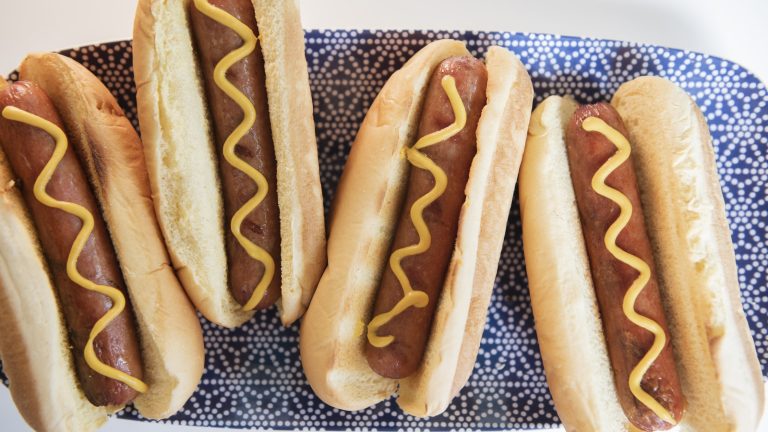We may receive a commission on purchases made from links.
When most people think of the 1980s, what comes to mind first is often the hair — big, bold, and gravity-defying. It wasn’t just hairstyles that made a statement, though. Interior design in the ’80s was just as unapologetically loud, experimental, and full of flair. Nowhere was this more evident than in the kitchen.
Known as the decade of excess, the ’80s was a time when more was more. Kitchens weren’t simply places to cook; they moved beyond their purely functional role and became a place in the home where families entertained and socialized. With open-plan living on the rise and technology making its way into the heart of the home, kitchens took on a variety of interior design trends that were making their way into homes across America.
’80s kitchens moved out of the saturated harvest tones of the 70s and embraced bold contrasts, funky colors, and new ideas that blurred the line between function and flamboyance. While many of these trends have since been left behind, they’re worth revisiting not just for nostalgia’s sake, but to appreciate how far kitchen design has come. Here, we take a step back in time to rediscover many of the 1980s kitchen trends that most people have forgotten about and look at those that are making a comeback.
Funky neon accents
No ’80s design trends feature would be complete without referencing the bold color scheme that played a major role in defining the decade. Of course, we’re referring to neon, a bright color palette that was anything but subtle and one that became a symbol of youth culture and rebellion in the ’80s. While neon was proudly displayed on the catwalk, in music videos, and in mainstream media, it also found its way into kitchens across the U.S.
Think hot pink bread bins, lime green canisters, bright green cabinets, and bar stools in electric blue — often showcased against black and white to create a high level of contrast in the kitchen. The use of these unapologetically bold colors was a deliberate choice to inject energy and personality into the heart of the home. You’d find flashy neon signs, striking upholstery, bright appliances, or loud artwork in American kitchens throughout the decade. Today, you can add a nostalgic ’80s touch to your kitchen by introducing small doses of neon through retro-inspired accessories like a funky backsplash or with a neon pink stand mixer like this one from Amazon.
While most modern interiors in 2025 lean toward neutral or earthy tones, a playful pop of neon is a great way to add some character to your kitchen space. If you’re looking to design the retro kitchen of your dreams, you could go all out ’80s with bright cabinets and a neon sign, but you’ll need to consider how this matches with the rest of your home.
Memphis design
The Memphis design movement burst onto the scene in the early 1980s with clashing bright colors, geometric shapes, and unapologetically playful patterns. It all started in Italy in late 1980 when Italian architect Ettore Sottsass and a few designers came together to create a new design collective that combined Art Deco with pop art. As with so many design trends during the ’80s, it was only a matter of time before the trend came alive in U.S. home kitchens.
Why was it called Memphis design? When the group first met, “Stuck Inside of Mobile with the Memphis Blues Again” was playing in the background and it became part of the inspiration for the name. The original name was The New Design, but the team rather opted for Memphis because, outside of the song, it was a reference to ancient Egypt and the birthplace of both Elvis Presley and Aretha Franklin.
In the ’80s you’d find bold colors, clashing patterns, and unusual furniture pieces. Art Deco-inspired geometric shapes and lines would merge with bright colors to create a statement piece, becoming the pièce de résistance of the kitchen. To replicate the Memphis design in your kitchen, consider mixing patterns and colors into or on wallpaper, opt for a few patterned tiles, or find an unconventional piece of furniture, whether that be a chair or a lamp. These are a few colorful kitchen design ideas. A quick search online will bring up more inspiration and you’ll be able to find a list of e-tailers who still focus on this style.
Honey oak cabinets
Going in a completely different direction from the mixed Memphis design, there was the honey oak cabinet trend that was featured in a plethora of suburban homes in the ”80s. These cabinets were a hallmark in U.S. kitchen design during the decade of decadence, fitted alongside the ever-popular white tile countertops. These cabinets rose to fame not only because oak is strong and durable, but also because the coloring was seen as warm and inviting, especially when polished.
You would find these golden-toned cabinets throughout the kitchen, often installed from floor to ceiling. They would at times be paired with oak flooring, oak trimmingm, and oak doors, creating a uniform look that was considered both practical and homely at the time. Today, however, honey oak cabinets are often seen as heavy and unstylish, and considered an outdated kitchen design trend that you should avoid.
If you have a kitchen that is still living in the honey oak ’80s that you want to update without a complete overhaul, you can incorporate a stained finish to give it a modern touch. You could also keep some of the oak cabinet finishes, like the doors, and replace the trim with a more modern look. If the kitchen counter is honey oak, you can replace it with one of black or white marble to add some contrast. Otherwise, you’re probably better off going with a more significant revamp and replacing the honey oak altogether.
Floral patterns
In the 1980s, floral patterns were everywhere — from featuring prominently on wallpaper and crockery to fabric-covered chairs and bedding. Even celebs adopted the trend in the ’80s, with the likes of Meryl Streep, Kim Cattrall, Christina Applegate, and Jane Fonda wearing floral attire to both formal events and as their casual wear. This trend was even fit for a royalty, with Princess Diana often seen in floral dresses. For the home kitchen, you’d find flowers featured on curtains, table cloths, crockery, dishcloths, and more.
While the 1970s may have been an era of being carefree, the ’80s went back to being traditional and in design, floral prints were a key part of the trend. These prints weren’t just decorative — they were emblematic of a decade when romance novels and movies were prolific and set the scene for a time when being romantic was back in fashion. The kitchen was, of course, not spared from this romantic trend — enter floral, and a lot of it.
Is floral design trendy in 2025? Not exactly, but it doesn’t mean you have to stay away from it. While transforming your entire kitchen into a floral flashback of the 1980s isn’t exactly recommended, you can still incorporate elements of this trend into your kitchen space. You can consider pairing a floral wallpaper in your kitchen, for example, with other touches from the ’80s, like geometric patterns or bold colors. Just don’t be excessive in the use of floral, as it can become a bit too much quite quickly.
Columns — a lesser known trend
In the 1980s, interior design wasn’t just about furniture and color — it was about making a statement. One of the more unexpected ways Americans did that was by incorporating architectural columns into their homes. This included the kitchen. Inspired by classical Greek and Roman aesthetics, columns not only served a structural purpose but were also about creating a sense of grandeur and old-world charm in suburban homes.
Columns would frame an open-plan kitchen entrance or feature as a bold statement piece alongside the counter. They would be made in both plaster and marble, and were often big and bold. While you may not find this as a prominent interior trend in kitchens across the U.S. today, they do still make an appearance. They are still incorporated into interior design as a way to add a sense of opulence or to create a focal point in the home.
If you’re looking to add some grandeur to your kitchen and you’re considering a column or two, you don’t need to go the traditional Roman-style route. You can add a square concrete column as a separation between your dining area and your kitchen, and use natural slate to give it a modern touch. You could also use wooden columns if you are going for a more farmhouse style.
Heavy wooden cabinet doors with heavy trim
If you grew up in the ’80s, you might remember your home having a kitchen that featured cabinetry that made a bold, weighty statement — quite literally. You might even still see this in your parents’ home today. We’re talking about the heavy wooden cabinet doors with ornate trim and deep profiles that were a defining feature of the decade’s kitchen design. One of the reasons you may still find these in homes today is that they were built to last.
These cabinets were mostly made from oak or cherry wood, featuring raised panels or trim, and paired with countertops of the same material. It wasn’t all heavy and clunky, though — you’d find open shelves to balance the solid appearance of the kitchen cabinet doors, or designers would use glass doors to show off the homeowners’ collection of expensive glassware or collection of China plates.
While one of the trends today is to go with colorful kitchen cabinets, natural materials are still being celebrated. You can, for example, add a wooden countertop cabinet to your kitchen space to create some contrast and warmth. Stained oak is particularly effective in achieving this style.
Eat-in kitchen office
In the later part of the 1980s, the home computer was becoming more popular and, as a result, so was the need for a home working space. With kitchens expanding during the ’80s as they became more of a focal point in the home, these bigger spaces had room to incorporate a small office space, which became known as the ‘eat-in office’.
You would find a computer station set up joining the kitchen island, or a desk built into a counter somewhere in the room that would act as the working space. You’d also find a landline phone set up in the kitchen, often with an extra length cord, making the kitchen office an ideal place to bring in the bacon. These work stations weren’t exactly discrete, with computers and monitors in those days being chunky and taking up a fair amount of room. Still, families made it work.
Today, working from the kitchen is far simpler, thanks to technology. All you need is your laptop or mobile phone. Thankfully, the cumbersome screens and system units are a thing of the past, and so is the eat-in office eye-sore that once was.
Out with the brown and in with the pastel
It wasn’t only neon that was a major trend in the 1980s. Pastel colors were also thrust into the spotlight as a defining feature in interior design. You’d find soft shades of baby blue, blush pink, mint green, peach, and dusty rose in households across the U.S. In the kitchen, the earthy browns and harvest tones of the 70s were swapped out for pastels, welcoming in a more cheerful and lighter space. With ’80s kitchens becoming far more than just a place to cook and eat, these colors were more suited to the socializing and relaxing that the heart of the home became known for at the time.
Mauve, a pale, pinkish shade of purple, was one particular pastel color that was popular during the decade, and this too found its way into kitchen design. You’d find it used in kitchen curtains, stools, appliances, and shelving, placed in contrast to a variety of other pastel colors.
In the U.S. during the ’80s, the popularity of pastel was further reinforced by Southwestern color trends that came back into fashion. This style drew inspiration from Native American, Spanish, and Mexican cultures, and featured a variety of earthy pastel colors. Pastel colors are now being welcomed back into home kitchens, replacing the safe and timeless white. Consider pairing pastel pink with a deep grey, or choose a pastel colored appliance to add some contrast and character to the space.
Lucite furniture
Lucite furniture was another trend that swept across the U.S. during the 1980s, not only because the clear properties of the product ‘opened up’ a room, but also because of its tough nature. Also known as acrylic or Plexiglas, Lucite is shatterproof and lightweight, and during the ’80s it was a great alternative to glass.
The transparent look gave homes a sleek, modern aesthetic that suited the bold and experimental nature of ”80s interiors. The fresh, bright, and clutter-free appearance made the product a popular choice when it came to furniture. In the kitchen, you’d find Lucite coffee tables, dining chairs, bar stools, and even cutlery. Those looking to show off their kitchen island would place transparent Lucite stools around it, creating a minimalist look that was a trend at the time. The product created a light, airy feel that contrasted beautifully with the otherwise heavy textures and dramatic colours of the era.
While not all interior designers are fans of acrylic furniture, you can still incorporate it into your own kitchen space if you are looking to create a more minimalist look. Consider acrylic dining chairs, which you can order from Amazon. You could also install acrylic shelves in your kitchen to achieve the look.
Glass blocks
Glass blocks — sometimes called glass bricks — were a design staple of 1980s interiors, and they’re instantly recognisable for their retro charm. In the ’80s, they were used in both residential and commercial spaces as an effective yet stylish way to let more light into a room. They also added texture and created visual interest in a space that was otherwise seen as dark or flat. You’d not only find these bricks incorporated into walls, but they would also be used as walkways.
In the 1980s home, walls made of glass blocks were often introduced to separate a kitchen from a living area without impacting light and the flow of the space. They also created privacy without sacrificing brightness. While they were for some time considered an unsightly leftover of the ’80s, we are seeing a resurgence of the trend.
Today, the use of glass blocks in kitchen design is gaining popularity for a number of reasons. While they are a great way of introducing some nostalgic ’80s feel into your kitchen space, there are also practical benefits. They are great for energy efficiency, providing as much insulation as you’d expect from a double-pane window while at the same time giving you privacy from prying eyes. They’re also effective as a security measure — it’s far harder to smash open a glass brick wall compared to a glass window.
The return of Hollywood Regency design
In the 1980s kitchen, Hollywood Regency meant lacquered cabinetry, brass or gold hardware, and black-and-white tiled floors. The style, which was one that made a statement in the home, came across as sophisticated and bold.
What exactly was Hollywood Regency? It was an American interior design trend that first came about in the 1930s and was inspired by the silver screen of the time. At the core of Hollywood Regency was an eclectic style, with bold jewel tone colors, checkerboard flooring, gilded accents, and mirrored furniture coming together to present a refined and glamorous look.
Unlike the shades of earthly brown, the Hollywood Regency design trend was carried over into the ’80s from the 70s. It’s a style that is considered to be timeless still today, introducing an element of fun into a home. To add this touch of Hollywood into your kitchen, you can fit an oversized chandelier or go a more subtle route by introducing rich colors into the kitchen space. You could also consider adding a statement piece like a patterned dining room table or create some contrast with bold patterns on the wall. Just make sure that the style isn’t too far removed from the rest of the home. Another way to achieve the retro kitchen of your dreams is to install black and white checkered flooring.





